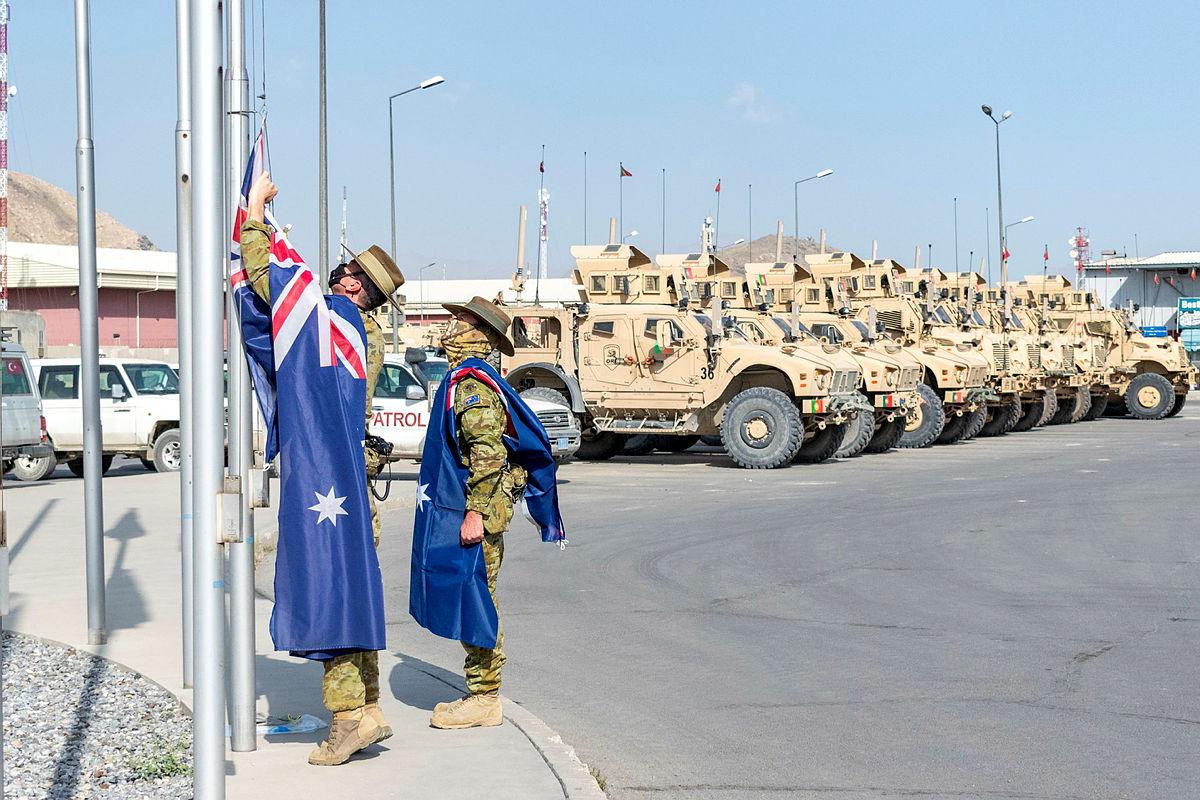Australia has closed its Afghanistan embassy before its military involvement ends as part of the United States–Taliban peace deal for the withdrawal of all foreign troops by 11 September 2021.
While that’s not unexpected, Australia is the first country in the Western alliance to end its on-ground representation and it has set the scene for other US allies, especially smaller ones, to do the same. This runs contrary to the assurances given to Kabul by Washington and its allies that their support will continue after troops withdraw.
Canberra’s actions, although with a caveat that it may reopen its embassy in the future, make sense when its own position is considered. It could not guarantee the security of the embassy which was not protected by Australian troops but by a security firm at a very high cost. Australia will now have non-residential representation through one of its embassies in the region.
The closure of Australia’s Afghanistan venture raises questions about its goal and effectiveness from the start. Was it to support its United States ally in fighting such terrorist groups as al-Qaeda and its Taliban harbourers, who facilitated the 9/11 attacks on the US? Or was it to help the people of Afghanistan rebuild their lives and their country?
It was probably a bit of both, but with emphasis on the anti-terrorism aspect as the main official justification. Australia’s diplomatic mission was there primarily to help Afghanistan with its reconstruction and to observe and report on the country’s changing circumstances while liaising with the Kabul government and other missions.
However, Australian troops were there to fight the Taliban and their affiliates as part of a wider US-led mission. Their task was to contribute to processes of stabilisation and securitisation that were essential for Australia to carry out its non-military activities in Afghanistan.
In general, Australia’s diplomatic and military operations made a positive contribution, especially to the reconstruction and security of the province of Uruzgan, albeit at high human and financial costs, which have now proven to have brought short-term gains. Australia lost 41 soldiers, with 260 injured, some crippled for life. Many among the 35,000 Australian troops who rotated through Afghanistan have suffered from post-traumatic stress disorder, causing dozens to commit suicide over the years. The financial cost came to around $10 billion.
Yet, most of the good work that Australian diggers and aid workers performed in Uruzgan is now in ruins, as the Taliban have regained control over much of the province.
The closure of the embassy ahead of total military withdrawal releases Australia from a very costly and unwinnable war. Yet, being the first country to disentangle itself from Afghanistan, basically cutting and running, is not a very good look.
And the closure is bound to hamper the investigation of the circumstances surrounding 39 Afghan civilians alleged to have been killed by Australian special forces and the justice that needs to be delivered in this respect. The initial justification of fighting terrorism rings hollow.
The Taliban, who have become peace partners of the Americans and their allies, have not severed their close relations with al-Qaeda. That’s been confirmed by Western intelligence services and the United Nations. The two groups are now well placed to play a critical role in determining the future of Afghanistan.
US President Joe Biden’s administration has said that it will be able to combat any terrorist actions out of Afghanistan from bases in the region. But this will not be as effective as having forces on the ground to conduct counterterrorist operations. For their part, the Taliban have warned Afghanistan’s neighbouring states against allowing the US to have bases on their soil for such a purpose.
A better option would have been for Australia to keep even one mid-level diplomat who could operate from the US embassy, which will be protected by a residual American force. This would have been at least symbolically pertinent to its on-going commitment to the people of Afghanistan.
It is now time for Canberra to take stock of Australia’s involvement in Afghanistan and to question whether it pursued the right strategy—and if it ever had an appropriate end game. Its participation in the conflict demonstrates that following the US into every war without a strategic necessity of its own to Australia can be futile.


